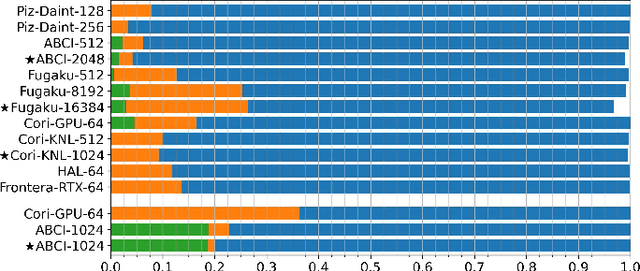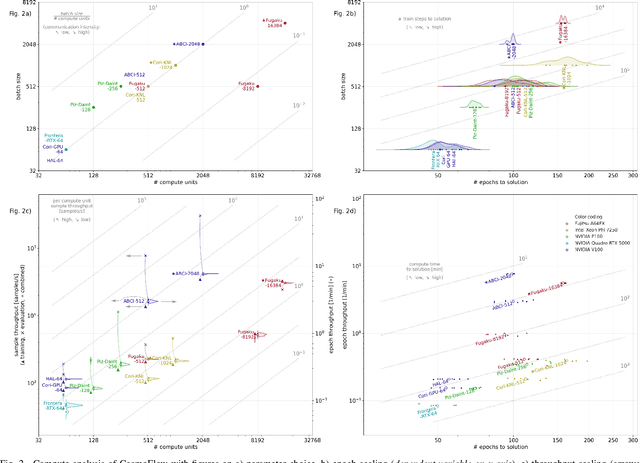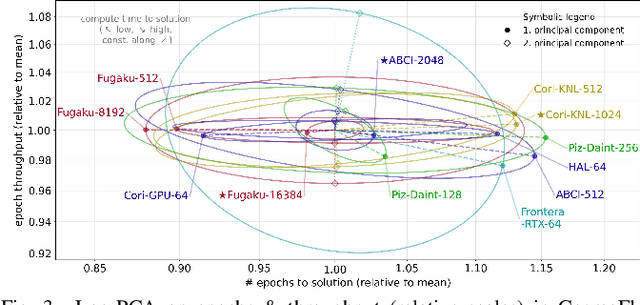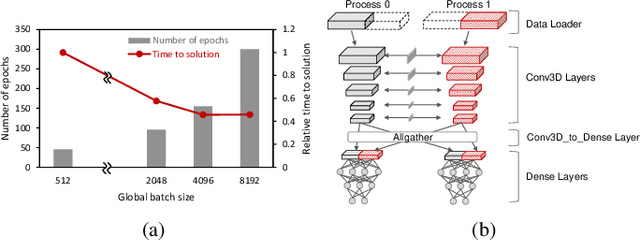Balazs Gerofi
KAKURENBO: Adaptively Hiding Samples in Deep Neural Network Training
Oct 16, 2023



Abstract:This paper proposes a method for hiding the least-important samples during the training of deep neural networks to increase efficiency, i.e., to reduce the cost of training. Using information about the loss and prediction confidence during training, we adaptively find samples to exclude in a given epoch based on their contribution to the overall learning process, without significantly degrading accuracy. We explore the converge properties when accounting for the reduction in the number of SGD updates. Empirical results on various large-scale datasets and models used directly in image classification and segmentation show that while the with-replacement importance sampling algorithm performs poorly on large datasets, our method can reduce total training time by up to 22% impacting accuracy only by 0.4% compared to the baseline. Code available at https://github.com/TruongThaoNguyen/kakurenbo
MLPerf HPC: A Holistic Benchmark Suite for Scientific Machine Learning on HPC Systems
Oct 26, 2021



Abstract:Scientific communities are increasingly adopting machine learning and deep learning models in their applications to accelerate scientific insights. High performance computing systems are pushing the frontiers of performance with a rich diversity of hardware resources and massive scale-out capabilities. There is a critical need to understand fair and effective benchmarking of machine learning applications that are representative of real-world scientific use cases. MLPerf is a community-driven standard to benchmark machine learning workloads, focusing on end-to-end performance metrics. In this paper, we introduce MLPerf HPC, a benchmark suite of large-scale scientific machine learning training applications driven by the MLCommons Association. We present the results from the first submission round, including a diverse set of some of the world's largest HPC systems. We develop a systematic framework for their joint analysis and compare them in terms of data staging, algorithmic convergence, and compute performance. As a result, we gain a quantitative understanding of optimizations on different subsystems such as staging and on-node loading of data, compute-unit utilization, and communication scheduling, enabling overall $>10 \times$ (end-to-end) performance improvements through system scaling. Notably, our analysis shows a scale-dependent interplay between the dataset size, a system's memory hierarchy, and training convergence that underlines the importance of near-compute storage. To overcome the data-parallel scalability challenge at large batch sizes, we discuss specific learning techniques and hybrid data-and-model parallelism that are effective on large systems. We conclude by characterizing each benchmark with respect to low-level memory, I/O, and network behavior to parameterize extended roofline performance models in future rounds.
 Add to Chrome
Add to Chrome Add to Firefox
Add to Firefox Add to Edge
Add to Edge